Project Update
New Booster Pump Installed
Over the past few months, Contractor Richard Townsend Construction has been istalling a new 125 hoursepower pump at the LDPCSD Lake McClure pumping facility at Barrett Cove. The $150,000 project was funded with ratepayer dollars, and provides efficiency and reliability in pumping water from the lake to the water treatment plant during times of drought. The project was completed within budget.
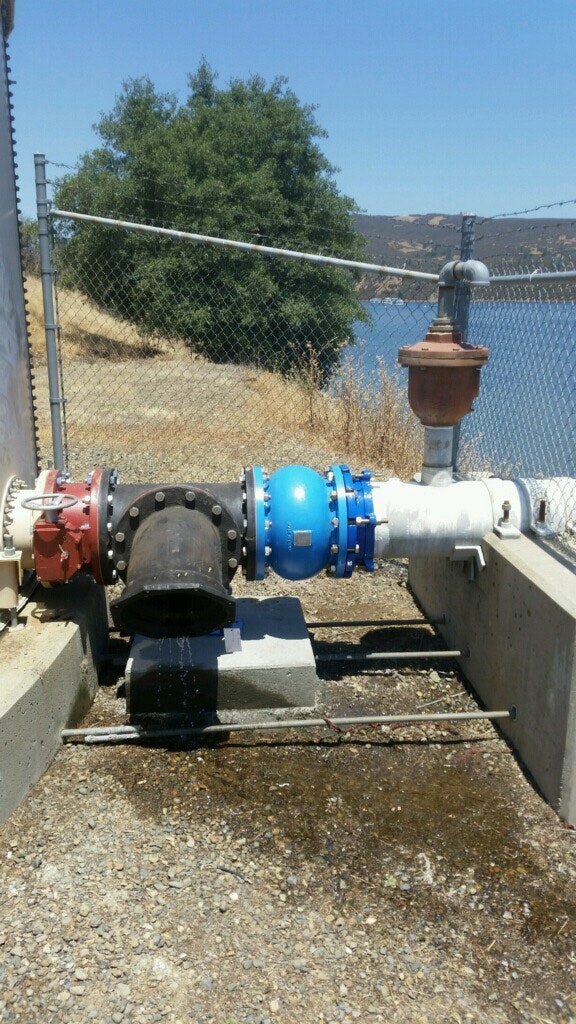
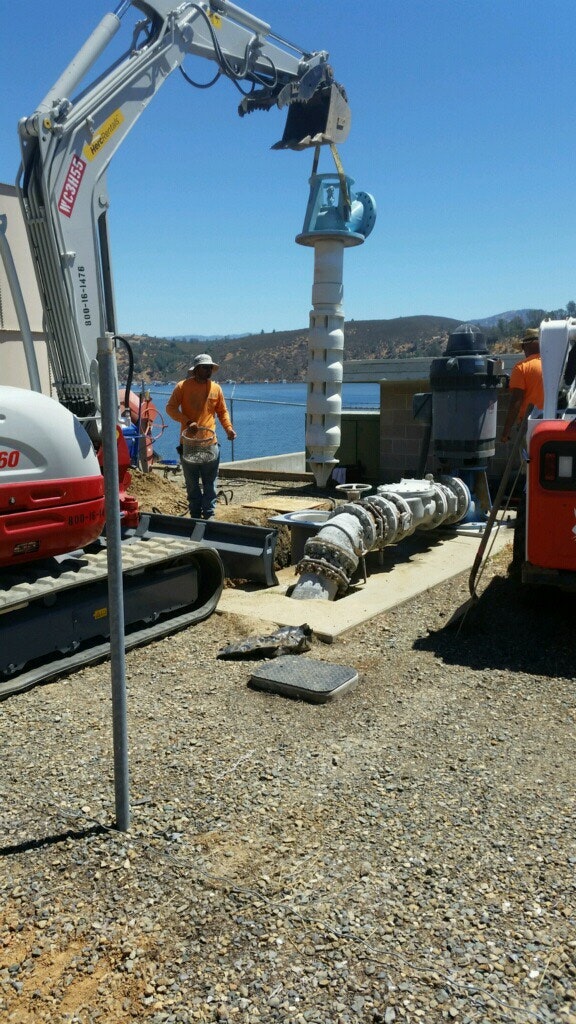
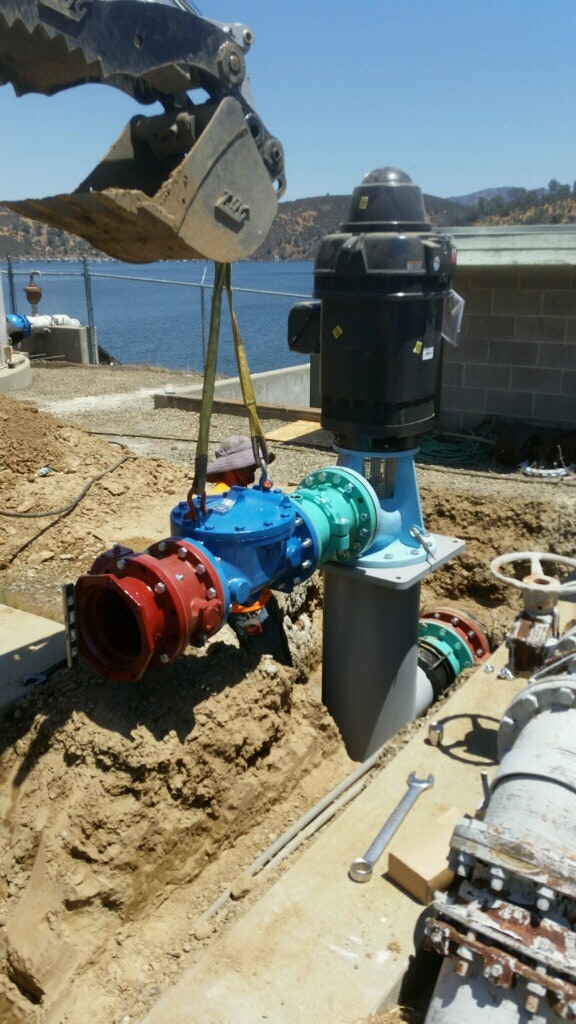
Replacing Leaky Pipes! - Water Service Line Replacement Project


You may have noticed over the past two years that a construction crew has been digging and replacing leaking pipes all over the community. In past years, Lake Don Pedro CSD crews have fixed hundreds of leaks on the smaller pipes that connect the water mains to each of the water meters, only to have more leaks pop up on the same plastic pipe weeks later. These "water service lines" should last many more years or decades, but unfortunately were improperly installed by the original developer in the 1960's. When the water system was originally built, the pipe trenches were backfilled with rocky soil, broken concrete and asphalt; which is resulting in pinhole leaks being created everywhere the pipe touches the sharp edge of these solid objects.
Due to the widespread failure and leakage of these pipes, the CSD crew simply could not keep up and a local contractor was hired to respond to these leaks by digging up and replacing the entire pipe from the water main to the meter box. In 2015 the CSD Board approved a project to begin replacing these failing water service lines on a proactive basis, since most of the time leaks in these pipes do not show up on the surface and go undetected except for much lost water. Through a huge effort during the drought, in 2016 the CSD received a $1,000,000 grant to be used mostly for replacement of leaky pipes. The CSD will soon be contracting to replace hundreds of these pipes over the next 18 months. More information to come!
Filters Fixed! January 2016

Your water rate dollars at work!! Both water treatment plant filters that were initially installed in the mid 1960s have been completedly renovated and should now operate efficiently for another 50 years.
October 22nd, 2016
District operations staff has been troubleshooting problems with operations of our water filters for several months. The filter run, which is the time the filters can operate before needing to backwash, has been reducing significantly resulting in increased staff treatment plant operating time, as well as increased chemical, electricity and water consumption; and waste.
The District treatment system consists of four filters contained within two pressure vessels. During normal operation, water is pumped in the top of the filter and exits the bottom after passing through layers of inert media, filtered clean. With proper function of the filter, the water purifying media will last for many years based on the quality of the raw water, chemicals used, and regular maintenance. District, maintenance consists of routine visual inspections by operators, and more detailed media and function inspections conducted by filter contractors with specialized equipment. District staff can conduct limited visual inspections of the inside of the filters, where a portion of the piping can be seen and the surface of the filter media observed. District staff inspection can reveal primarily piping system and interior coating failures as well as problems with the top layer of media such as mudball formation, which typically indicates the need for a more detailed inspection by a filter specialist.
District Engineer Elizabeth Binkley summarized their experience with the history of the District’s filters in a memorandum detailing the maintenance performed and recommendations to proceed with the immediate renovation of the filter. As detailed in Binkley’s memo, the filter media was replaced between 1998 and 2003. After that first renovation, professional inspections were done every two years per industry standards through 2009 until they were discontinued. A filter inspection was scheduled for October 2016, at which time the current filter defects were discovered.
ERS Industrial Services was hired to perform a routine detailed inspection of the filters, and multiple critical problems were identified, including broken piping, clogged wash jets, rusted and deteriorated lateral couplings, and failed areas in the steel bulkhead wall separating the filter cells.
As the media was determined to be completely fouled, ERS was initially contracted on an emergency basis to simply remove and replace the filter media. After complete removal of the media, the root cause of the hydraulic filtering problems and media failure was identified.
We currently are operating on only one filter vessel, which is very risky and may fail fairly soon if the problem is not addressed. Operating only on one filter will jeopardize certain aspects of our regulatory compliance and can produce unreliable water quality and very high backwash water waste and associated costs. The failed filter must be repaired immediately; and the work will take two weeks if started today. And, due to the condition of the first filter, we can anticipate some level of similar repairs also needed in the second filter vessel.
Filter renovation was not included in the 2016/17 fiscal year budget. Staff recommended that the Raw Water Line Replacement Project in the amount of $250,000 be held over until the 2017/18 fiscal year to provide funding adequate for the renovation of both filters. The board approved a resolution authorizing proceeding with the renovation of filter 1, with the cost of any necessary filter 2 renovations being presented separately to the Board at a future meeting following completion of filter 1 and inspection of filter 2.
June 7th, 2016
This may look like just a fence and a bunch of asphalt, but behind that fence is the completed Ranchito Well No. 2, funded with grants from the Department of Water Resources ($282,500) and the State Water Resources Control Board ($181,500), and only $11,260 of your water rate money (paid to the Lake Don Pedro CSD) We are thrilled to have this new water supply available for our community!
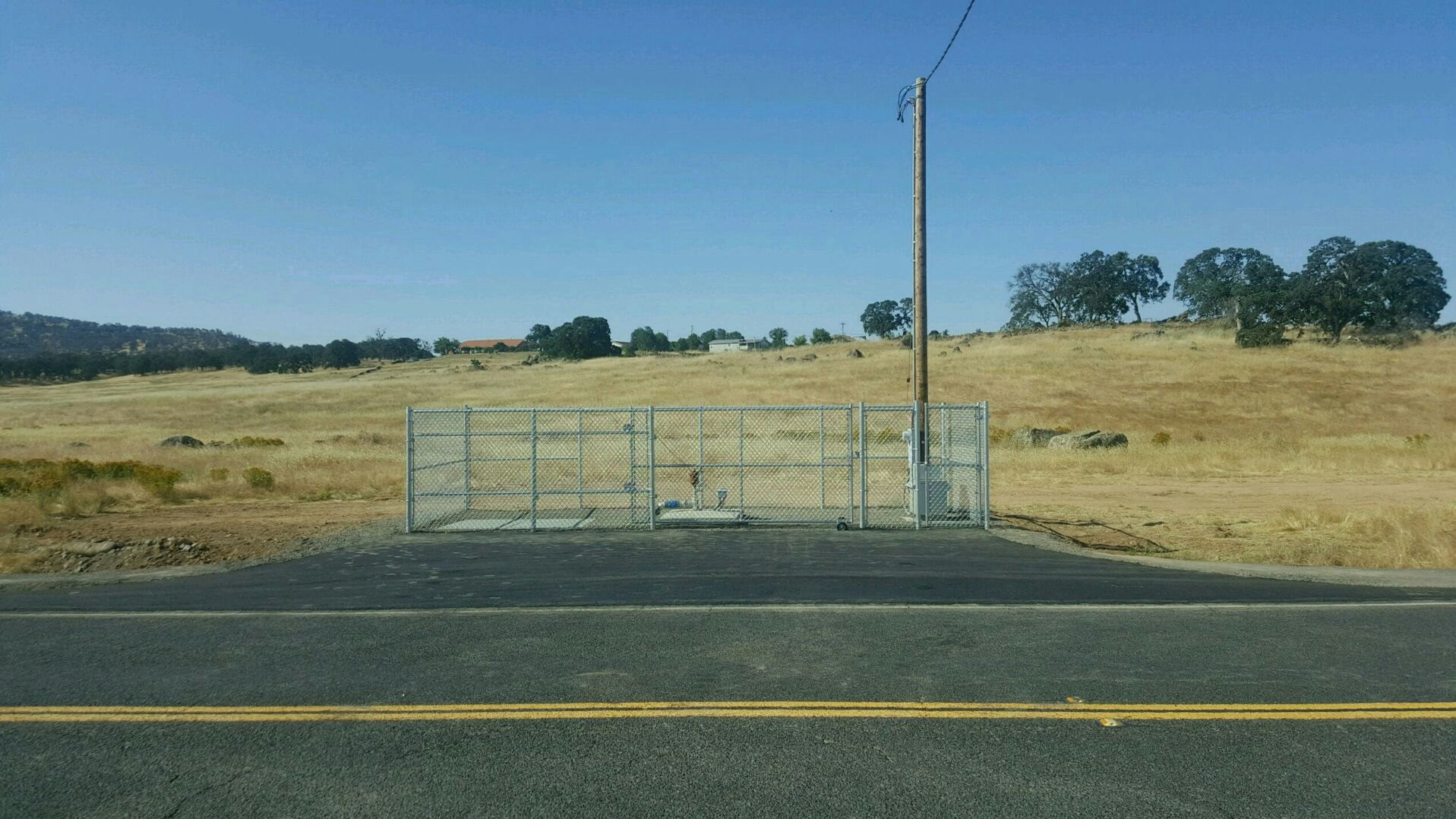
May 2nd, 2016
The wells have finally been FULLY FUNDED! The US Department of Agriculture, Rural Development has as of today committed the last $500,000 in grant funding to the project. Out of the entire cost of the project to install three new, high producing groundwater wells, the only cost to the District was to buy a 17 acre piece of land that had an existing well on it. The graphs show the funding for the entire project, and the grants used for each well individually. This is time for celebration for the CSD and its Board for having the vision and drive to develop a new water supply for our community using state and federal grants!
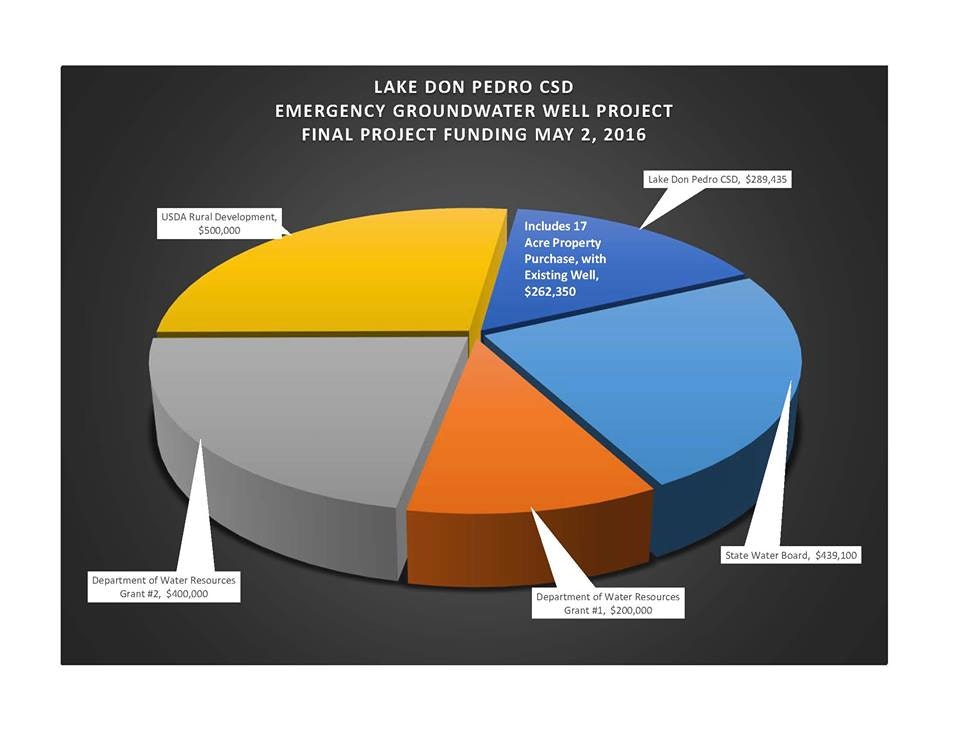

Additionally, our entire community has be recieving water soley from the new emergency groundwater wells since January 1st, 2016. We are proud to state that the water quality continues to be excellent and the well production is exactly as we had estimated. The Wells are also nearly completed and after a two month delay waiting for the ground to dry up, and federal grant funding to come through, the contractors are back on the job!
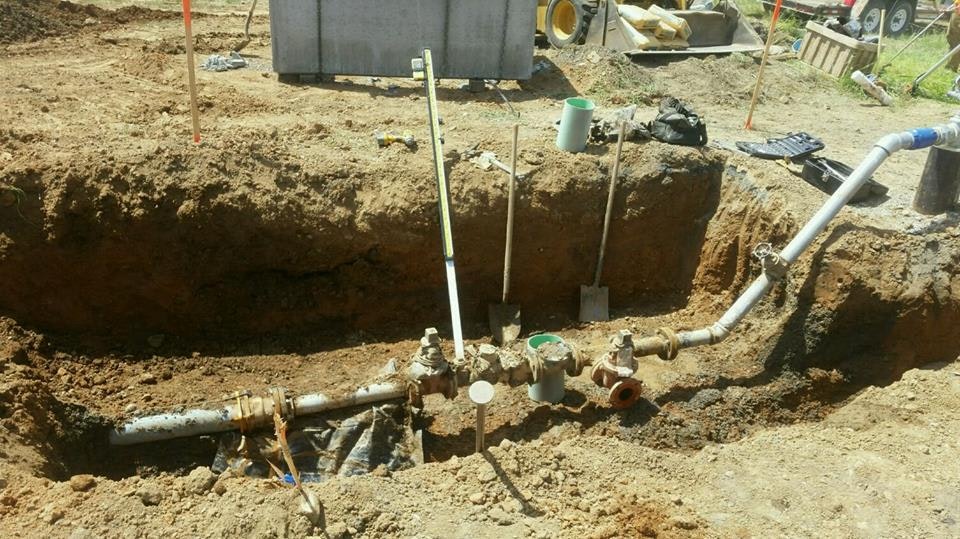
February 18th, 2016
ANOTHER $1 MILLION IN GRANTS RECEIVED BY LDPCSD FOR IMPORTANT PROJECTS! The State Department of Water Resources has offered the Lake Don Pedro CSD a $1 million grant to pay the rest of the cost of the emergency wells, to fund water conservation activities and associated customer rebates, as well as to cover the cost of replacement of some of the leaky water pipes in the system. Stay tuned for more details,
January 1st, 2016
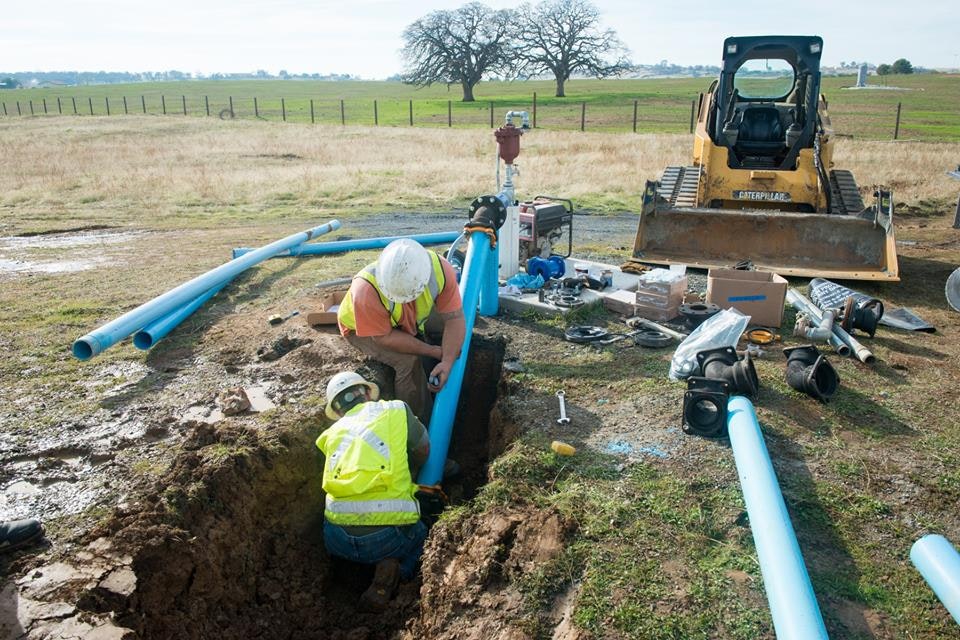
Your Don Pedro water supply is now 100% from the new wells built last year with your water rate dollars and state grants! State and Federal requirements prohibited us from drawing any water from Lake McClure after 12/31/15 until the lake's water level rises above 625 feet above sea level, which could be months from now. If we had not built these wells, right now we would be required by the state to truck in water from another area and/or provide everyone enough bottled water for drinking, sanitation and cooking. We estimate that trucking water would cost over $1 million per month; meanwhile the water system would be shut down with no piped water to the homes, businesses or fire hydrants.
The new wells are pumping and the lake pumps are OFF. Due to progressive action by the CSD, the support of the state grants and most importantly the water conservation efforts of our customers over the summer, we now have an alternate water supply to serve the community until the drought's grip loosens and the lake level rises.
